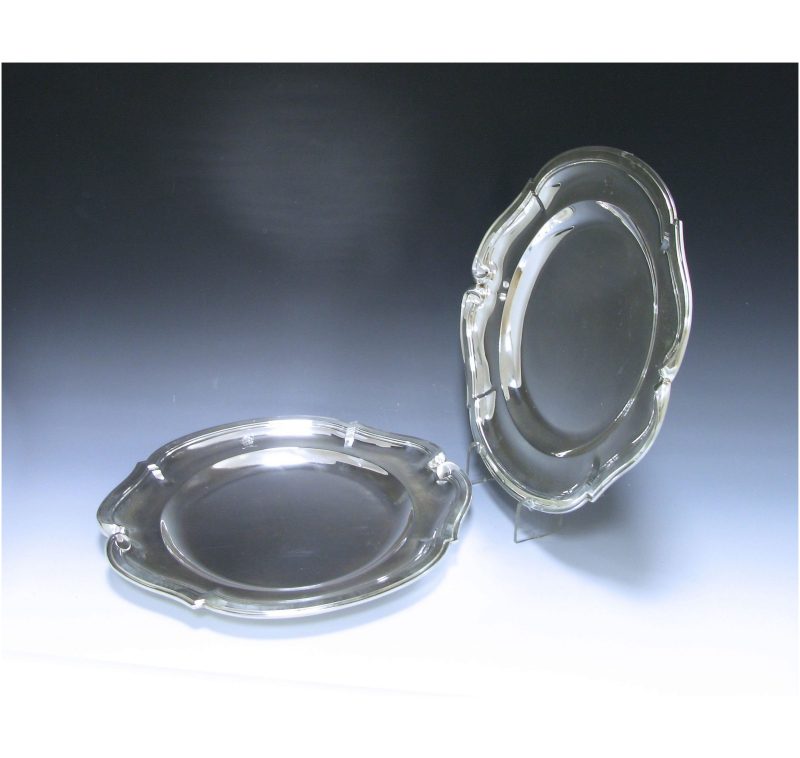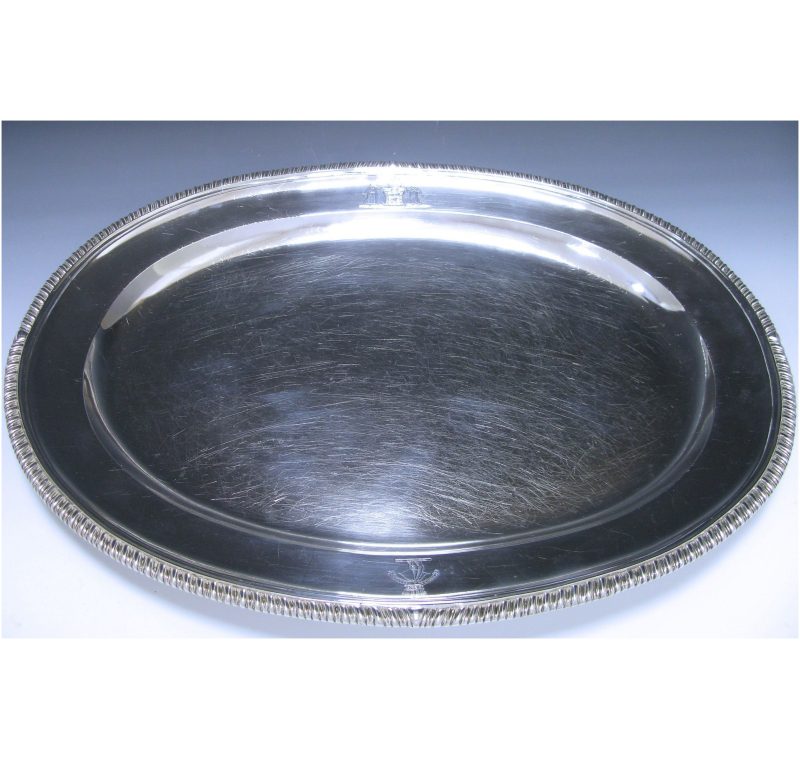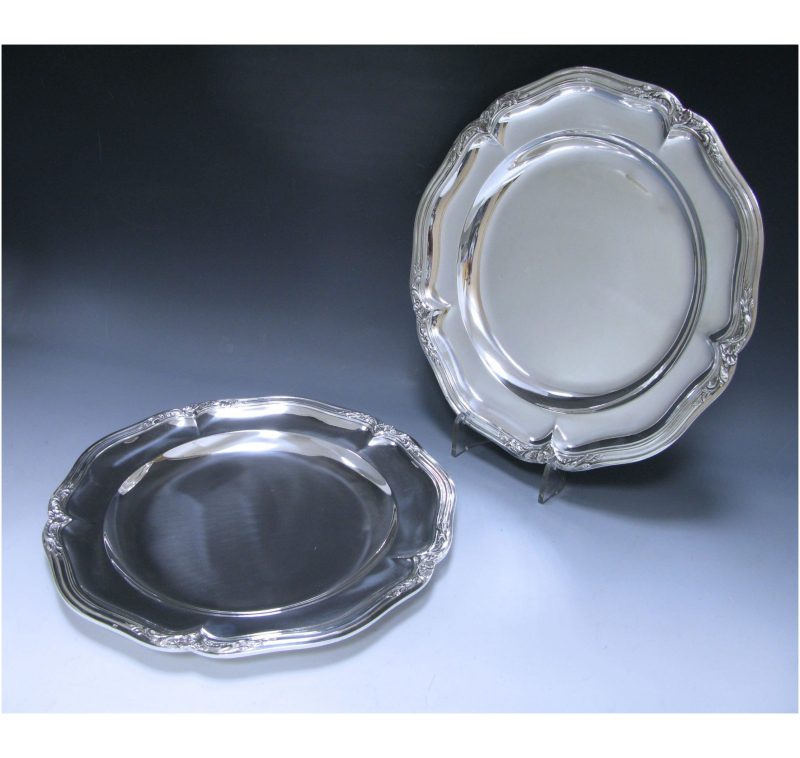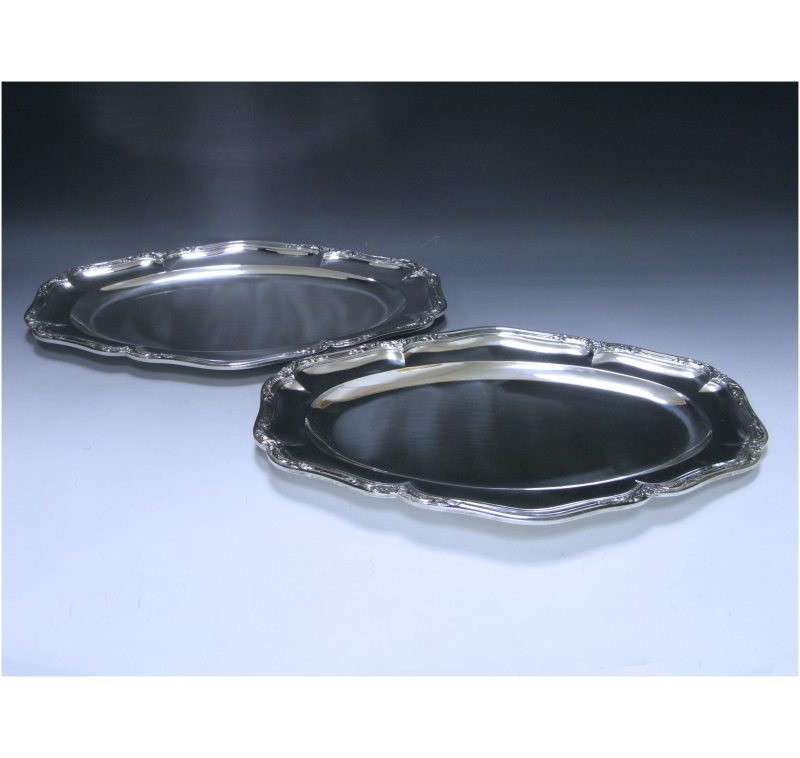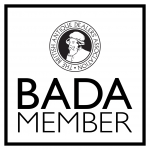With the increase in importance of fine dining throughout the eighteenth century, dishes (mostly without but occasionally with covers) were starting to be made by silversmiths. Dishes for serving joints of meat on the dining table grew in importance throughout the century and were often made in large sets of varying sizes. Some of the small dishes were used for game such as Guinea Fowl or Pigeon whilst the largest ones for example were made for huge cuts of beef.
They are often engraved (as with a large quantity of eighteenth and nineteenth century silver) with the coat of arms or crests of the original owners. Most meat dishes tend to be shaped oval in form but other shapes are known most notably shaped circular dishes (which are often referred to as second course dishes). These second course dishes tend to be somewhat larger than the regular dinner plate and are generally in the 12-to-14-inch (30.5 cms-35.5 cm) diameter range.
We have some very fine and important dishes and covers in stock at the moment including a very large dish belonging to the Prime Minister during The Crimean War George Hamilton-Gordon (1784-1860 given as his wedding present in 1805 ( Haddo House, Aberdeenshire),and dishes from The Rothschilds ,The Maharajah of Baroda ,Viscount Newark and some rare eighteenth century silver meat dish covers which are recorded in The Garrard Ledgers ( Victoria and Albert Museum) from 1793 belonging to one of the wealthiest men in England at the time the Wakefield cloth merchant James Milnes ( 1755-1805).
Today these wonderful dishes are often used for sandwiches and canapés as well as their original purpose for cuts of meat.
